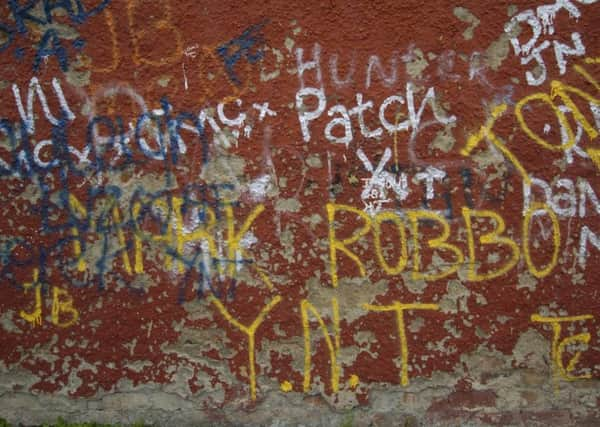Brian Monteith: Stamp out graffti in Edinburgh before it overwhelms us


The graffiti from aerosol paint or marker pen was on the backs of bus seats, inside telephone boxes (remember them?) and even on lampposts (Fiona loves Snoddy, etc), but it was relatively minor. Not now, not any more. Like a bad dose of acne, it is growing across Edinburgh and slowly making the city look ugly.
Graffiti is no longer just about gangs, it’s now about personal signatures, called tags. It is now much larger in both size and scale – and most of it is indecipherable – but it’s often degrading, filthy and like giant hogweed needs to be stamped out before it overwhelms us.
Advertisement
Hide AdAdvertisement
Hide AdI reject the suggestion unauthorised graffiti is street art that should be preserved, it’s not, it’s illegal, unwanted and disrespectful of people and property. There are many outlets for self-appointed street artists – including legal graffiti walls – so there’s no need for other people’s walls or our public utilities to be abused. I’ve seen how graffiti ruins the aesthetics of many beautiful cities; Berlin is covered in it, Paris looks filthy because of it, while the French railway carriages are so plastered with the ugly designs they look threatening and dangerous. If a train can be painted without anyone stopping the culprits what other crimes can happen on them?
Previously I was proud that Edinburgh had managed to duck the curse of graffiti, its visibility here has previously been nothing like the scale suffered by other British cities – but I can now see it is growing and it needs to be dealt with.
Our council has a great deal on its plate, the state of our pavements and roads are atrocious – but so too are the sides of buildings and the street furniture, and the council has a duty to deal with it.
New York showed how zero tolerance to low-level crime – including cleaning up its ubiquitous graffiti – could turn the look and perception of the city around. By cleaning up its act it cleaned up how it looked, and suddenly it looked smarter, safer and more attractive to locals and visitors.
Advertisement
Hide AdAdvertisement
Hide AdEdinburgh has beautiful buildings, both old and new, they do not need a name scrawled or sprayed across them to show off someone’s false bravado. Nor do they need second-rate cartoons or illustrations that demean the sides of people’s houses, garages or shops.
Roadside telephone and traffic light junction boxes are a particularly popular target – which could be easily solved by the utility companies and the city council cleaning them up – and keeping them that way the instant they are attacked. The way to kill graffiti is to stamp it out immediately, to demoralise the offenders and show them they cannot win.
It also requires the graffiti to be treated seriously and those caught blighting our city fined heavily – with it made known using social media..
The council has an online form for reporting graffiti on their own buildings, with a commitment to remove racist or offensive words within a day, and other graffiti within ten days. The council also has the power to insist some types of private landowners, such as the utility companies, deal with graffiti.
Advertisement
Hide AdAdvertisement
Hide AdBut we need to do more. We need to use business initiatives to help clean up illegal graffiti, and use new building developments with their temporary hoardings to provide sites where budding signwriters can be accommodated – leaving our buildings to remain looking just as they were meant.